
Hades – The Mythological Origins of the Underworld God and the Myths that Inspired Disney’s Hades
Tracing the history of the Greek god of the underworld and the goddess Hera, who partly inspired the portrayal of Hades in the film
“Uh, guys? Olympus would be that way.”
There is no doubt that Hades is one of Disney’s most successful and original villains ever produced by Disney.
The Disney version of the god of the Underworld is so amusing in his mannerisms and actions that, in the end, despite everything, it’s hard not to sympathize with him a little. The whole story of conquering Olympus takes a backseat to his clumsy attempts to get rid of Hercules, always getting angry but trying, in vain, to maintain his composure.
All in all, he resembles us a bit (or at least resembles me)when we find ourselves in situations and with people we can’t tolerate, testing our patience (see scenes with Pain and Panic), but trying in every possible way to stay calm. Just like Hades, we keep repeating to ourselves like a mantra, “Okay, fine, fine. I’m cool. I’m fine,” even though we know very well that it’s not true and that we could easily strangle the first person in our path. In other words, each of us has Hades Style moments in life, which makes the god of the dead more human and less divine than one might think.
However, one thing needs to be clarified. As you will see as you read further, in many aspects, the mythological Hades was quite different from the portrayal in the film. This is because, in ancient myths, Hercules’ true enemy was the goddess Hera. Some things that Disney’s Hades does in the film, like sending Pain and Panic in the form of snakes to get rid of baby Hercules, are attributed to Hera’s schemes, not Hades’. The truth is, Hades had very little to do with Hercules. So why choose Hades instead of Hera? Apparently, from a storytelling perspective, he was more suitable and certainly more spectacular, being the god of the underworld. To be precise and meticulous, however, I decided to share some additional information about Hera, the true nemesis of Hercules in mythology.
That being said, what was the Hades of Greek mythology like, and what myths and legends are associated with him? And what about those associated with Hera? Let’s try to discover that in our article today!
Hades: “The Invisible One”
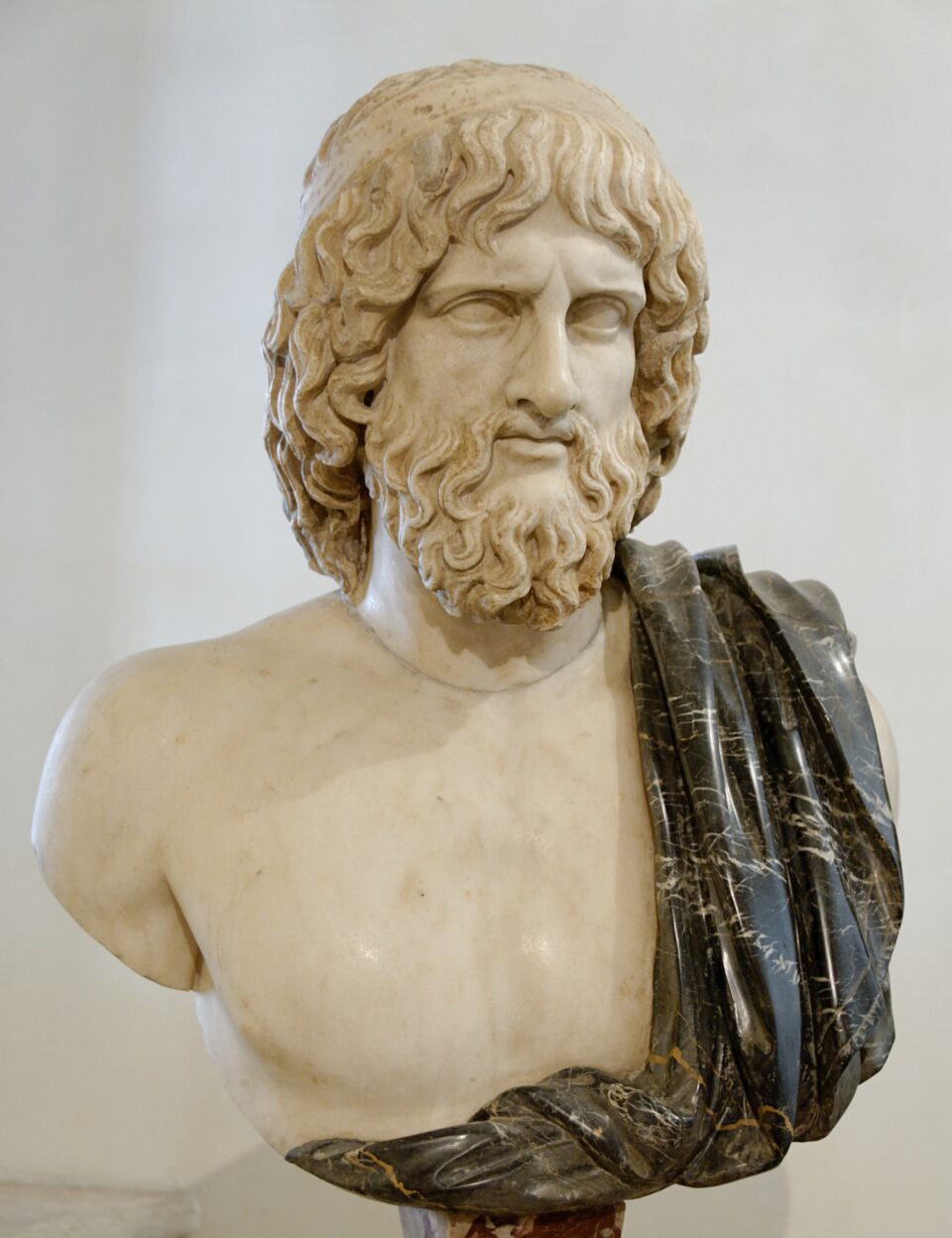
In Homer, Hades is referred to as “relentless” and “unyielding,” emphasizing his role as the supreme guardian of order in the realm of the dead. This made him an inevitable and fearsome deity in the eyes of the world.
Furthermore, his name in Greek means “the invisible,” and indeed his realm, which bears his name (Hades), was perpetually shrouded in darkness and shadows, and Hades himself rarely emerged from there. Additionally, the association with invisibility is also attributed to his famous helmet. During the Titanomachy, the Cyclopes had bestowed upon him a helmet that rendered him invisible whenever he wore it (our Disney Hades would have had an easier time with that).
However, Hades had not only this “dark” aspect that made him fearsome and sometimes detestable to some. He was also known in other decidedly opposite and more benevolent ways. For the Romans, for example, he was known as Pluto, which means “dispenser of wealth,” and he was often depicted holding a cornucopia. This is because, dwelling underground, he was also seen as a beneficent deity who bestowed wealth and fertility upon the earth, promoting agricultural labor, the growth of vegetation, precious metals hidden in the depths of the earth, and so on.
In essence, he had a sort of dual life: on one hand, he was a fearsome and dark deity who ruled over death and was to be feared and revered; on the other hand, he could be a symbol of hope, thanks to the wealth and abundance he was capable of bestowing while residing underground. For this reason, many sought him in various ways during cults, and besides the aforementioned “relentless” and “unyielding,” there were other epithets such as “illustrious,” “benevolent,” “he who welcomes many guests (the deceased),” “the wise counselor,” or “the renowned,” just to name a few.
In short, Hades knew how to command respect in one way or another.
The Myths Surrounding Hades
With that in mind, what is the mythological story behind this unique deity?
Well, what is important to know about Hades is that he was very devoted to his duty as the ruler and master of the underworld. Unlike the other gods and goddesses who reveled around the Earth in search of constant new experiences, he sought to find satisfaction in the chills and thrills that the realm of the Underworld provided. That’s why the most famous myths involving him as the central figure can be essentially narrowed down to two:
- The Titanomachy, as recounted by Hesiod in his “Theogony.”
- The Homeric “Hymn to Demeter,” tells the famous story of the abduction of Persephone. In this tale, Hades, in his quest for a wife, decides to venture to the Earth and abduct the aforementioned maiden to make her his queen.
Of course, there are other appearances of the god of the Underworld, but compared to his brothers and sisters, he remained undisturbed unless necessary.
The Titanomachy
"But Rhea was subject in love to Cronos and bare splendid children, Hestia, Demeter, and gold-shod Hera and strong Hades, pitiless in heart, who dwells under the earth, and the loud-crashing Earth-Shaker, and wise Zeus, father of gods and men, by whose thunder the wide earth is shaken." Theogony - Hesiod
The Titanomachy is nothing more than the battle that Zeus and the other gods of Olympus had to fight against the Titans for the conquest of the celestial throne, as narrated by the poet Hesiod in the “Theogony.”
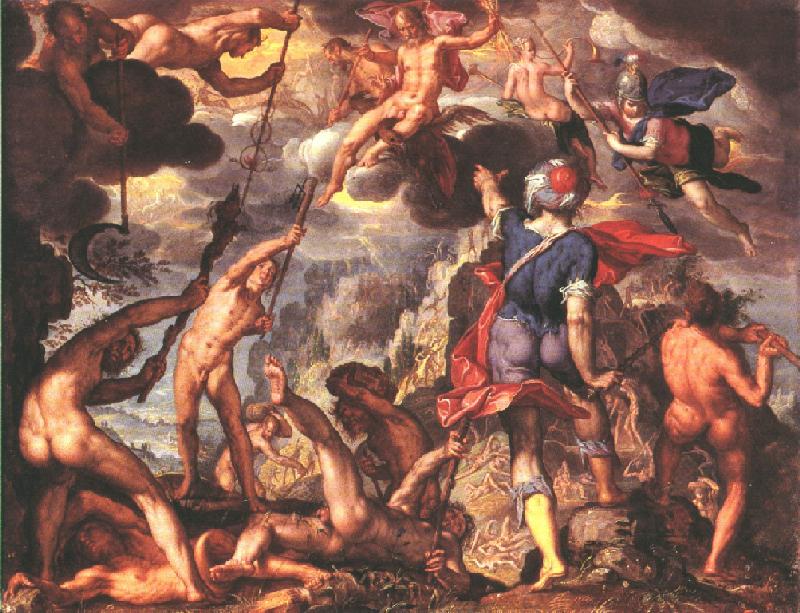
Hades, Zeus, Poseidon, Demeter, Hera, and Hestia were the children of the Titans Cronus and Rhea. Their father Cronus, fearing that his children would overthrow him, would swallow them at birth. This continued until the youngest child Zeus was secretly saved by his mother, who deceived her husband by giving him a stone wrapped in swaddling clothes instead of the baby. Thus, Zeus, once grown and far away from his father, managed to save his siblings through a stratagem by forcing his father to regurgitate them. They emerged unharmed and already adults.
At this point, the Titanomachy began, in which Titans and Giants fought on one side, and Zeus and his brothers and sisters fought on the other, aided by the Cyclopes and the Hecatoncheires, enormous creatures with a hundred arms. The war lasted for ten long years until Zeus and his allies finally managed to defeat the Titans, imprisoning them in Tartarus at the center of the Earth.
During this war, Hades received the aforementioned helmet of invisibility from the Cyclopes as a gift. It was thanks to that helmet that he was able to secretly enter Cronus’ abode and steal his weapons. While Poseidon threatened the defenseless father with his trident, Zeus struck him with a thunderbolt. After the war, the various realms were divided among the siblings, and Hades received the kingdom of the Underworld and sovereignty over the realm of the dead.
The Hymn to Demeter – The Abduction of Persephone
"She was filled with a sense of wonder, and she reached out with both hands to take hold of the pretty plaything. And the earth, full of roads leading every which way, opened up under her. It happened on the Plain of Nysa. There it was that the Lord who receives many guests made his lunge. He was riding on a chariot drawn by immortal horses. The son of Kronos. The one known by many names. He seized her against her will, put her on his golden chariot, And drove away as she wept. She cried with a piercing voice, calling upon her father, the son of Kronos, the highest and the best." Hymn to Demeter - Homer (15-21)
Another well-known tale that features Hades as the protagonist (and one of the rare occasions when he leaves his dark abode to go to the surface) is the abduction of Persephone to make her his beloved wife and queen.
The story is mentioned in various ancient works but is further developed in Homer’s Hymn to Demeter, one of the oldest literary sources that discuss Persephone and her mother Demeter.

In the hymn, it is narrated that Persephone is abducted while she is with her friends, the nymphs who are the daughters of Oceanus, wandering through meadows collecting flowers. As she is engrossed in picking a narcissus, the earth opens up, and Hades springs forth in his chariot pulled by black horses, seizes her, and takes her with him to the Underworld to marry her. Persephone’s mother, Demeter, realizing the abduction of her beloved daughter, wanders in despair for nine days and nine nights in search of her. On the tenth day, she finally learns the truth about Persephone’s fate. Overwhelmed by grief and suffering, Demeter refuses to speak or eat, and her anguish affects both humans and the earth. Demeter, being the goddess of nature and harvest, causes the earth to stop producing, turning it barren and leading to an eternal winter.
At this point, Zeus tries to mend the situation to appease Demeter’s anger and suffering and restore the natural order. However, a problem arises because Hades made Persephone eat a pomegranate seed. You might wonder what the problem is. Well, having consumed food from the realm of the dead, she is no longer allowed to return to the living and effectively becomes the queen and goddess of the Underworld. At this point, Zeus decides that although she remains the queen and consort of Hades, she must still return to the surface for a part of the year to live with her mother. Therefore, during spring, Persephone would return to her mother, and upon the arrival of autumn, she would descend to the Underworld to be with her husband.
A Disney-related curiosity: The most devoted fans will surely recall that this story has already appeared in the works of Disney. There is an old Silly Symphony from 1934 called “The Goddess of Spring,” which tells this exact story!
The Human Side of Disney’s Hades
Essentially, these two main myths feature the fearsome god of the dead. Among others, we can recall those narrated by Ovid, which involves Minthe and Leuce. It is said that Hades fell in love with Minthe, a nymph of the Underworld, and Persephone, being jealous, transformed her into the mint plant. The story of Leuce is quite similar: in this case, Hades becomes infatuated with Leuce, a nymph who is the daughter of Oceanus, and Persephone transforms her into a white poplar tree.
That being said, returning to our Disney-fied Hades, one thing is certain: he has inherited the entire aspect of being a powerful and fearsome undisputed sovereign deity of the Underworld from the myth. However, it is equally true that Disney’s Hades, as I mentioned earlier, is decidedly more human and relatable than he may seem.
Think about all the times you have had to deal with incompetent people who got on your nerves, yet you were forced to maintain your composure. Reflecting on that, you realize that the good old Hades is much more human and understandable than he appears. Except for the whole conquest of Olympus, of course.
Hera, the Archenemy of Hercules
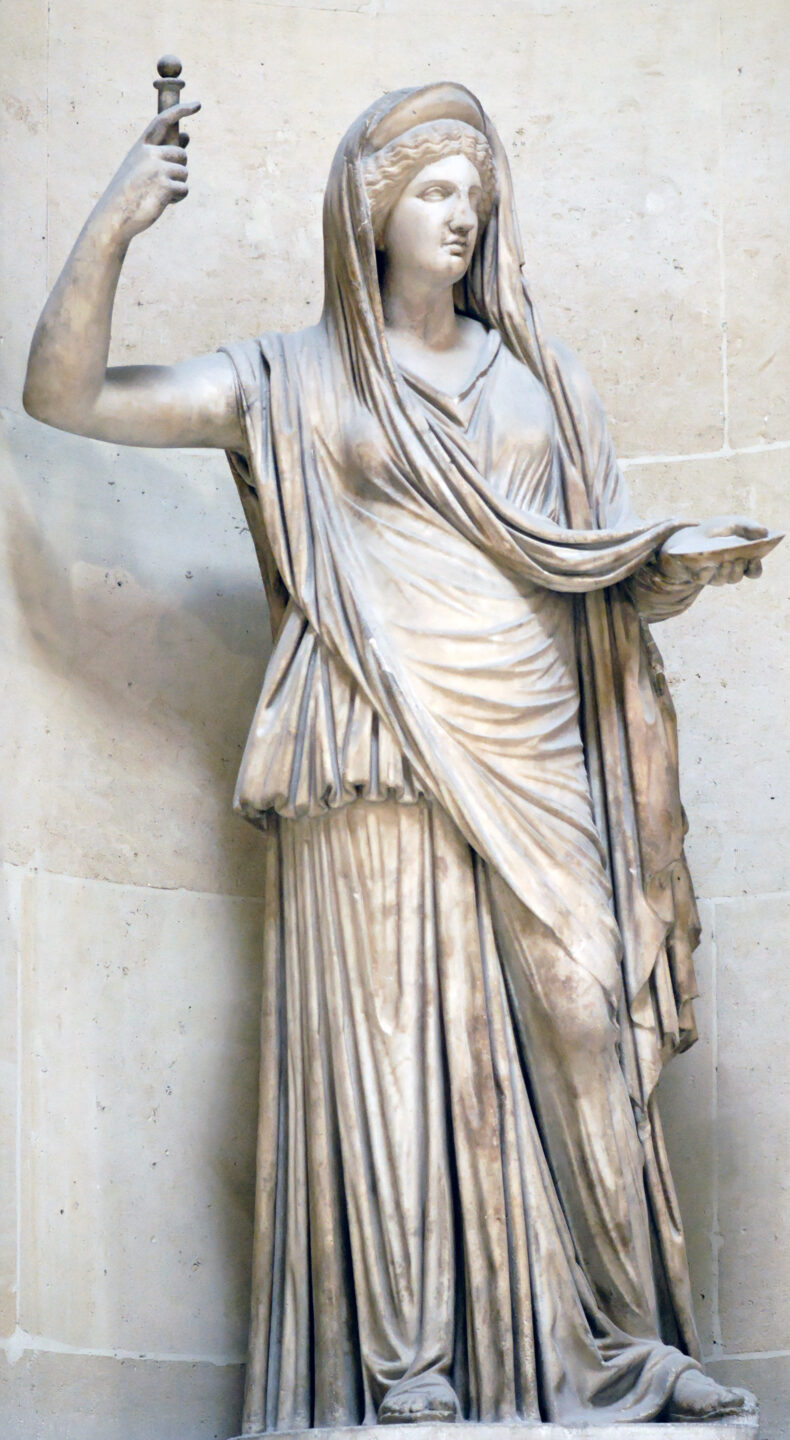
As you have seen, the mythological Hades, apart from kidnapping maidens and nymphs and overthrowing his cannibalistic father, hardly has any dealings with Hercules.
In the myth, Hercules’ true enemy is the goddess Hera. Much of the hatred and wrongdoing attributed to Disney’s Hades is inspired by her story. Therefore, I couldn’t leave out some additional information about her.
Hera, known as Juno to the Romans, was one of the most important deities of the Greek Olympus, as well as the supreme female deity of the entire Pantheon.
As mentioned earlier when discussing the Titanomachy, she was also a daughter of Cronus and Rhea, and like the others, she was swallowed by her father at birth until Zeus managed to resolve the situation.
Her divine role was primarily twofold. On one hand, she was the consort (and sister) of Zeus, thus revered as the queen and mother of all gods. Secondly, she was worshipped as the goddess of marriage, women’s lives in general, and protector of childbirth. Scholars are uncertain about the origin and meaning of her name. Some believe it may derive from “hora,” meaning season. Others suggest it signifies “ready for marriage,” “heifer,” “great mother goddess,” or “lady.” What is certain is that her cult was highly significant throughout the ancient world and played a significant role in Greek literature and myths.
Therefore, it is evident that she had dedicated sites and temples in many ancient locations. First and foremost was the city of Argos, where she was the protector, hence being referred to as the “Hera of Argos.” However, she also had important temples elsewhere, such as Olympia, Tiryns, and the island of Samos, to name a few.
Being a prominent figure, she has been depicted multiple times in art, sometimes seated on a throne, wearing a crown, and holding a scepter. Other times, she is portrayed with a pomegranate, a symbol of fertility, or in various other ways.
The Myths Involving Hera
There are numerous myths and literary works in which Hera appears, testifying to her great significance. It would be too long to mention them all. It is enough to know that the major and most famous works that recount her stories are Homer’s “Iliad” and the aforementioned “Theogony” by Hesiod. Herodotus also mentions her in his “Histories,” and in the Latin world, she appears in Ovid’s “Metamorphoses” and Horace’s “Ars Poetica.” Additionally, some works discuss Hercules and his Twelve Labors. This provides a general overview.
The Marriage of Zeus and Hera
“The statue of Hera is seated on a throne; it is huge, made of gold and ivory, and is a work of Polycleitus. She is wearing a crown with Graces and Seasons worked upon it, and in one hand she carries a pomegranate and in the other a sceptre.” Description of Greece – Pausanias
Before discussing Hera’s hatred for Hercules, let’s briefly summarize how she became the wife of Zeus and the supreme queen of all the gods. (I have already briefly mentioned the events surrounding her birth about the aforementioned Titanomachy.)
As always, there are various versions of the myth, but the most widely accepted one tells that Zeus fell in love with Hera and appeared before her in the form of a cuckoo while she was spinning. He flew in through the window and landed on her shoulder, revealing his true form and forcing the goddess to marry him. In other versions of the myth, it is Hera who asks Zeus to marry her. The wedding was celebrated in the presence of all the deities.
Hera in the Iliad
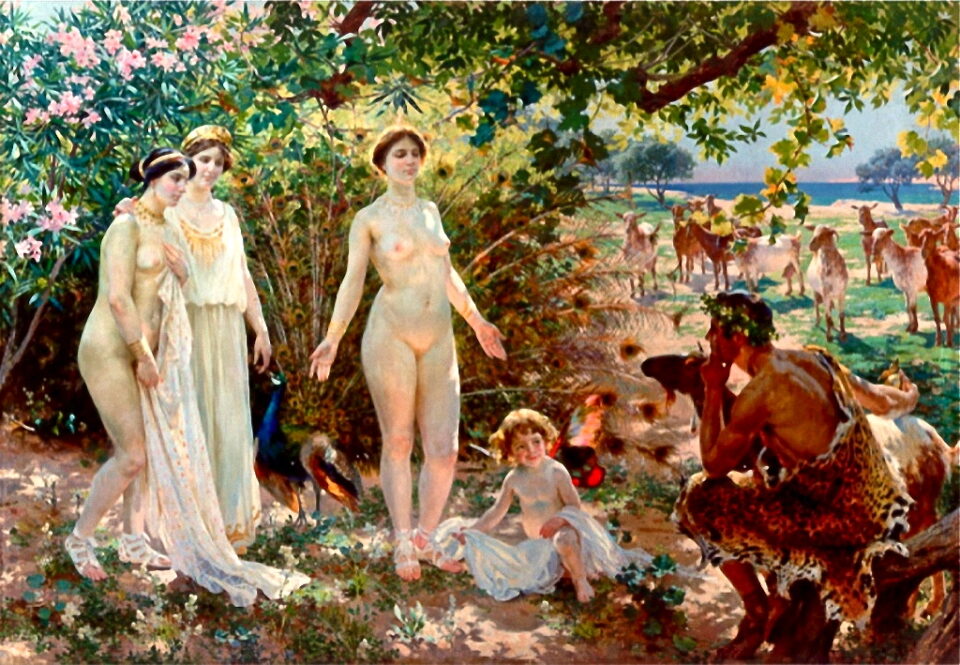
Hera also deserves a brief mention in the Iliad. She is indeed a notable character in Homer’s famous epic. During the war, she sides with the Greeks and desires the fall of Troy. The reason for her resentment can be traced back to the myth of the infamous Apple of Discord, which we have discussed before, where the Trojan prince Paris, during a banquet, chooses Aphrodite as the most beautiful instead of Hera. This is why Hera hates the Trojans.
Why does Hera hate Hercules?
Hera has always been known in the mythological world for her incredible jealousy. And it must be said that she has a valid reason because Zeus, on the other hand, was known for his constant infidelity. This is the basis of many myths surrounding Hera, and Hercules is no exception.
Zeus, in one of his many affairs, became infatuated with the mortal Alcmene and took on the form of her husband, Amphitryon, to be with her. From their union, Alcmene became pregnant with Hercules. Upon learning of this, Hera, consumed by jealousy, started causing trouble. Even before Hercules was born, she accelerated the birth of Eurystheus, the cousin of the future hero, so that he could have power over him. Zeus had promised great power to the firstborn between the two. When Hercules was still a baby, she sent two snakes to attack him (which is also mentioned in the Disney film). However, the future hero strangled both snakes.
When Hercules was still a child, it is said that Zeus (or, according to other versions, Hermes) deceived Hera into breastfeeding Hercules so that he could become immortal through her milk. When Hera realized the trick, she threw him away, and a splash of her milk formed the “Milky Way” in the sky.
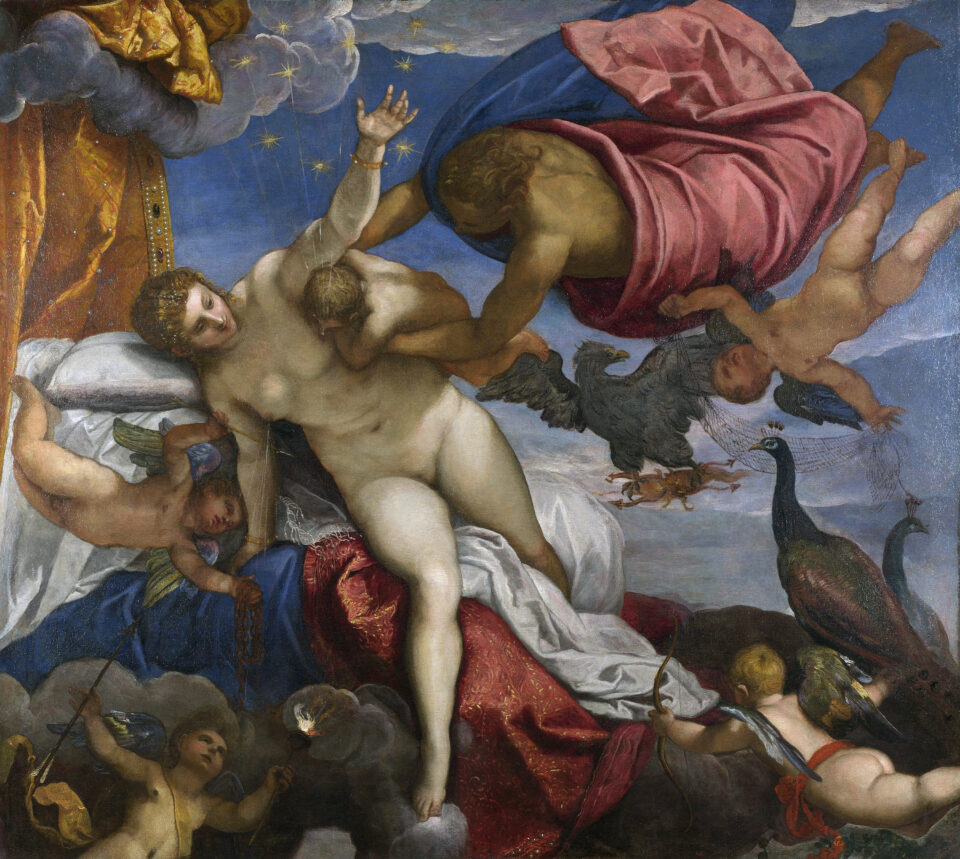
When Hercules had grown into an adult, married Megara, and had children, Hera drove him mad. As a result, he went on a killing spree. Poor Hercules had to perform the infamous 12 labors to atone for his actions, which I have discussed in detail here. Even during the labors, Hera did not make things easy, constantly trying to thwart Hercules’ efforts.
Other victims of Hera’s jealousy
For the sake of completeness, it must be mentioned that Hercules was not the only victim of Hera’s jealousy and Zeus’ affairs.
One myth, for example, tells of Hera’s jealousy towards her priestess Io, who was courted by her husband. There are various versions of the myth: in one version, Hera, jealous of Io, transforms the young woman into a cow to discourage her husband’s advances and assigns the hundred-eyed giant Argus to guard her. According to other versions, Hera catches the two lovers in the act, and Zeus, to avoid being discovered, transforms Io into a heifer, which Hera takes into her custody and entrusts to Argus. Whatever the truth may be, what is certain is that Zeus, to overcome the obstacle, orders Hermes to kill the giant, which indeed happens. As a tribute to the slain giant, Hera takes his hundred eyes and places them on the peacock’s tail.
Another victim of Hera’s jealousy was Lamia, a Libyan maiden who had caught the eye of Zeus. In revenge, Hera drove Lamia to madness, and she killed her children. Then, consumed by grief, Lamia transformed into a monstrous creature that has since hunted children.
Needless to say, there are many more victims, but we won’t list them all here, leaving you the pleasure of researching them (and perhaps writing to us if you’d like to discuss them).
With that said, we have reached the end of our journey. If you enjoyed the article, please write to us on our social channels and continue to follow us!
Sources:
- https://www.romanoimpero.com/2011/05/culto-di-plutone-ade.html
- https://www.miti3000.it/mito/biblio/index.htm
- http://www.perseus.tufts.edu/hopper/searchresults?page=1&q=Hades
- https://www.treccani.it/enciclopedia/ade/
- https://www.treccani.it/enciclopedia/ade_%28Enciclopedia-Italiana%29/
- https://www.treccani.it/enciclopedia/ade_%28Enciclopedia-dell%27-Arte-Medievale%29/
- https://www.britannica.com/topic/Hades-Greek-mythology
- https://www.treccani.it/enciclopedia/persefone_%28Enciclopedia-Italiana%29/
- https://www.treccani.it/enciclopedia/proserpina_%28Enciclopedia-dei-ragazzi%29/
- https://www.google.it/books/edition/Dizionario_Larousse_della_mitologia_grec/ABbDG2AwoAsC?hl=it&gbpv=1&dq=dizionario+di+mitologia+greca+e+romana&printsec=frontcover
- https://www.treccani.it/enciclopedia/persefone
- https://www.treccani.it/enciclopedia/titani_%28Enciclopedia-dei-ragazzi%29/
- https://www.britannica.com/topic/Hera
- https://www.mondadorieducation.it/risorse/media/secondaria_secondo/greco/enciclopedia_antico/lemmi/era.html
- https://www.treccani.it/enciclopedia/era_res-cf9149da-a832-11de-baff-0016357eee51/
- https://www.treccani.it/enciclopedia/hera_(Enciclopedia-dell’-Arte-Antica)
- https://www.treccani.it/enciclopedia/giunone_%28Enciclopedia-dei-ragazzi%29/
- https://www.romanoimpero.com/2009/10/culto-di-giunone.html
- https://www.worldhistory.org/Hera/
- https://www.treccani.it/enciclopedia/era_res-8c78ce62-8bae-11dc-8e9d-0016357eee51_%28Enciclopedia-Italiana%29/
- https://www.treccani.it/enciclopedia/alcmena/#:~:text=(gr.,di%20Anfitrione%2C%20figlia%20di%20Elettrione.
- https://www.treccani.it/enciclopedia/io_%28Enciclopedia-Italiana%29/
- https://www.treccani.it/enciclopedia/lamia_res-9e01b8db-8bb0-11dc-8e9d-0016357eee51_%28Enciclopedia-Italiana%29/
- https://uh.edu/~cldue/texts/demeter.html
- https://www.theoi.com/Text/Pausanias2B.html





